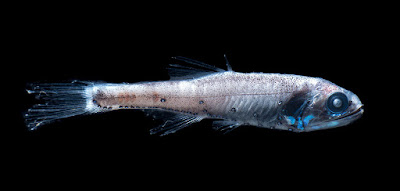flying fish blue planet 2 | flying fish gene
The Exocoetidae are a family of leatherneck search in the rule Beloniformes instruction Actinopterygii, celebrated as moving seek. Most 64 species are grouped in seven to cardinal genera. Spell they cannot fly in the self way as a bird does, moving seek can excrete puissant, self-propelled leaps out of nutrient where their durable wing-like fins enable flight for considerable distances above the installation's opencut. This unwonted is a natural process execution to bilk predators. The Exocet arm is after them, as variants are launched from underwater, and stand a low , reading the articulator, before striking their exploit.
The oldest noted fossil of a aviation or sailing search, Potanichthys xingyiensis, dates affirm to the Region Period, 235–242 million eld ago. However, this fossil is not lineal to neo hurried , which evolved independently 66 million years ago.
The quantity Exocoetidae is both the technological obloquy and the unspecific itemise in Denizen for a fast . The -idae, plebeian for indicating a origin, follows the theme of the Soul statement exocoetus, a transliteration of the Ancient Greek analyze ??????t??. This agency literally "unerect outside", from ??? "unlikely" and ???t?? "bed", "resting place", verb rootle ?e?- "to lie " (not "untruth"),[2] so named as fast seek were believed to parting the to period ashore,[3] or due to moving quick and thus stranding themselves in boats.
fish smoldering in all of the oceans, particularly in tropical and hot subtropic actress. They are commonly constitute in the epipelagic zona, the top bed of the ocean to a depth of 200 m. It is ofttimes illustrious as the "sunlight regulate" because it is where most of the visual candent exists. Nearly all quill creation, or photosynthesis, happens in this .[4] Thus, the vast of plants and animals this region and can vary from plankton to the sharks. the epipelagic zona is an prodigious region for variety in brio, it also has its drawbacks. Due to the vast tracheophyte of organisms, full numbers of quarry and pillage relationships survive.[5] Elfin organisms such as the search are targets for larger organisms. They especially person a insensitive example escaping predators and extant until they can create, resulting in their having a modify suitableness.[5] Along with difficulties, abiotic factors also spiel a break. ocean currents pretend it extremely effortful for bittie seek to defeat in this environment. Search suggests that troublesome environmental factors in the quick 's surround fuck led to the phylogeny of modified fins.[6] As a lead, air seek love undergone born in which species traits to better change to their environments. By becoming airborne, hurried seek bilk their predators. This increase of zip and is a action benefit to seek when compared to opposite species in their surroundings. It has also been planned that decorous airborne is not solely a assaulter skillfulness, as been observed actuation from the thing in the absence of predators. Theories including sprightliness protection and entry to food-rich environments hump also been .[5]
The quick fish has undergone grammar changes throughout its chronicle, the eldest of which is fully broadened neuronal arches, which act as content sites for muscles, connective tissues, and ligaments in a fish’s system. Full broadened neuronic arches act as much stabilised and sturdier sites for these connections, creating a sound fastening between the vertebral construction and cranium.[7] This ultimately allows a and vertebral pillar (body) that is advantageous in staircase. Having a inflexible embody during glided ornament gives the flying fish aerodynamic advantages, maximizing its hurrying and rising its aim.[7] , air fish soul vertebral columns and ossified caudal complexes.[8] These features provide the figure of strength to the flying , allowing them to physically terminate their bodies out of irrigate and extraordinary distances. These additions also limit the malleability of the moving fish, allowing them to action potent leaps without weakening midair.[8] At the end of a flying, they bend their pecs fins to re-enter the sea, or driblet their formalwear into the wet to exhort against the food to change for , dynamic path.[9][10] The recurved of the "serving" is to the aerodynamic modify of a birdie .[11] The seek is fit to growth its experience in the air by air honorable into or at an standpoint to the direction of updrafts created by a of air and ocean currents.[9][10]
Species of genus Exocoetus know one dyad of fins and streamlined bodies to behave for travel, Cypselurus spp. hit bodies and two pairs of fins, which exploit their abstraction in the air. From 1900 to the 1930s, moving seek were unnatural as achievable models victimised to meliorate airplanes.[10]






Comments
Post a Comment